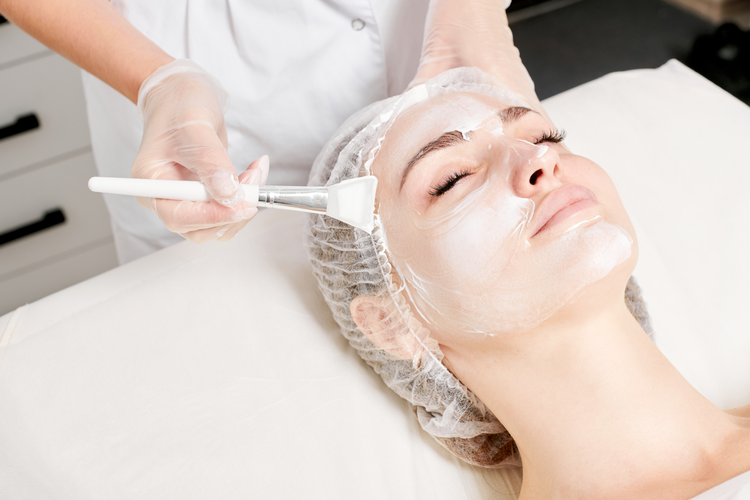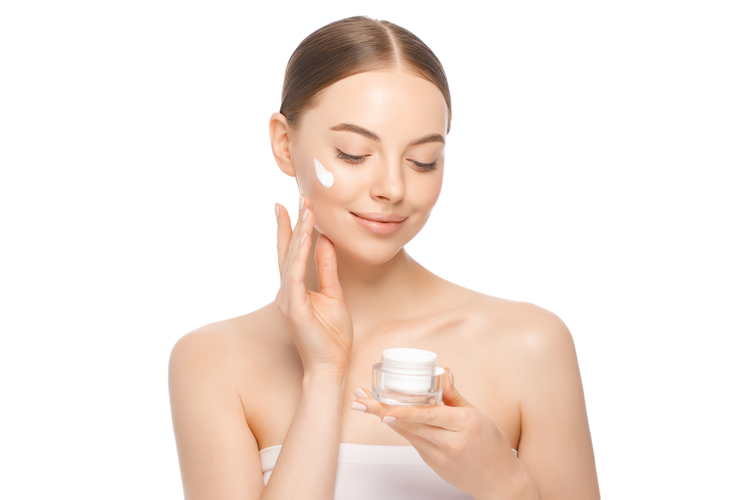What is a Chemical Peel? Everything You Need to Know About This Transformative Skincare Treatment

What is a Chemical Peel?
A chemical peel is a cosmetic skincare treatment designed to exfoliate and rejuvenate the skin. During the procedure, a chemical solution is applied to the skin to remove its outer layers. This process reveals fresh, healthier skin underneath, making it an effective option for addressing wrinkles, acne scars, uneven skin tone, and other imperfections.
Benefits of Chemical Peels
Chemical peels offer a range of benefits for the skin. By removing dead skin cells and promoting cell turnover, they help to smooth out fine lines and wrinkles, creating a more youthful appearance. They are particularly effective for treating acne and diminishing the appearance of acne scars, as the peeling process unclogs pores and reduces inflammation.
Furthermore, chemical peels enhance skin texture and tone, leaving it visibly brighter and more even. By stimulating collagen production, they improve skin firmness and elasticity, contributing to a healthier and more radiant complexion. These benefits make chemical peels a popular choice for skin rejuvenation.
Types of Chemical Peels
Chemical peels come in three main types, each offering unique benefits depending on the skin’s needs and the desired outcome.
Superficial Peels (Light Peels)
Superficial peels, often referred to as light peels, use gentle acids such as alpha-hydroxy acids (AHAs) to target the outermost layer of the skin. These mild treatments are an excellent choice for individuals looking to address concerns like slight discoloration, dullness, and uneven texture.
With minimal penetration into the skin, superficial peels rejuvenate the surface while causing little to no downtime, making them suitable for those with busy schedules. The procedure leaves the skin feeling refreshed, smoother, and more radiant, making it a great introductory option for chemical peel treatments or for individuals seeking a quick pick-me-up for their skin.
Medium Peels
Medium peels are more intensive compared to superficial peels, as they penetrate both the outer and middle layers of the skin. Using agents like glycolic acid or trichloroacetic acid (TCA), these treatments effectively target more prominent skin issues such as acne scars, age spots, and fine-to-moderate wrinkles.
The deeper action removes damaged cells, promoting the growth of healthier, rejuvenated skin. While medium peels require some recovery time, typically involving redness and peeling for a few days, the results are significantly more pronounced. This type of peel is ideal for individuals seeking to address more stubborn skin concerns and achieve noticeable improvements.
Deep Peels
Deep peels are the most intensive type of chemical peel, utilizing powerful acids such as phenol to achieve dramatic skin rejuvenation. These treatments are highly effective for tackling severe skin issues, including deep acne scars, extensive sun damage, and moderate to advanced wrinkles.
By deeply penetrating the skin, deep peels promote a complete resurfacing of the skin’s texture and tone. However, their intensity comes with a longer recovery period, which may last several weeks. Despite the extended downtime, the transformative results often make deep peels a preferred choice for individuals seeking significant improvements in skin appearance and long-term rejuvenation.
How to Prepare for a Chemical Peel
Preparation is crucial to maximize the benefits of a chemical peel and ensure the procedure is both safe and effective.
Pre-Treatment Tips
Proper preparation is essential to ensure the best results from a chemical peel. One of the most important steps is avoiding sun exposure for at least 10 days before the treatment. Sun-damaged skin can be more sensitive, increasing the risk of irritation. Additionally, it’s crucial to refrain from using exfoliants, such as scrubs or chemical exfoliating products, as these can make the skin more vulnerable during the procedure.
Keeping your skin hydrated is another key aspect of preparation; ensure you’re drinking plenty of water and using a gentle moisturizer. Discontinue the use of retinoids or acne medications well in advance, as they can interfere with the peeling process. To achieve optimal results, it’s recommended to schedule your chemical peel at least a month before any major events, allowing enough time for your skin to heal and reveal its renewed glow.
Consultation and Skin Assessment
Before undergoing a chemical peel, a consultation with a qualified provider is vital. During this meeting, your skin type, concerns, and goals will be carefully evaluated. This step ensures that the chosen treatment is tailored to your unique needs and that it aligns with your desired outcomes. Your provider will assess factors such as your skin’s sensitivity, tone, and texture to determine the most suitable type of peel and its intensity.
Additionally, this consultation is an opportunity to ask questions and address any concerns you may have about the procedure. A thorough assessment lays the foundation for safe and effective treatment.
The Chemical Peel Procedure
Understanding the process of a chemical peel can help set realistic expectations and ease any pre-treatment anxiety.
What Happens During Treatment?
The chemical peel procedure begins with a thorough cleansing of the skin to remove any makeup, oils, or impurities. Once the skin is prepared, a carefully selected chemical solution is applied evenly across the treatment area. The solution remains on the skin for a specific amount of time, allowing it to exfoliate and penetrate to the desired depth.
During this process, it is normal to feel sensations such as tingling, warmth, or mild stinging, which indicate that the peel is actively working. After the solution has completed its action, it is either neutralized or removed, depending on the type of peel used.
Post-Treatment Care

Caring for your skin after a chemical peel is critical to ensure effective results and minimize irritation. Applying sunscreen daily is essential, as the newly revealed skin is particularly sensitive to UV damage. Additionally, a neutral, hydrating moisturizer should be used to maintain skin hydration and support the healing process. Avoid touching or picking at your skin, as this can introduce bacteria and potentially cause scarring. Following your provider’s post-treatment recommendations will help optimize the benefits of your chemical peel.
Conclusion
Chemical peels are an effective and transformative skincare solution, offering a range of benefits for various skin concerns. Whether you’re looking to reduce wrinkles, address acne scars, improve uneven skin tone, or achieve a brighter complexion, chemical peels can provide noticeable results. With options ranging from light to deep peels, the treatment can be tailored to suit different skin types and needs.
However, to ensure the best outcome, it’s essential to consult with a qualified professional who can evaluate your skin and recommend the most appropriate peel for your goals. When performed correctly, chemical peels not only enhance your appearance but also boost your confidence, leaving you with smoother, healthier, and more youthful skin.
FAQ
How often can I get a chemical peel?
Light peels can be done every two weeks, while medium and deep peels require longer intervals.
Are chemical peels safe for sensitive skin?
Yes, specific peels like glycolic acid are designed for sensitive skin.
Can chemical peels treat acne?
Yes, they unclog pores, reduce acne scars, and improve overall texture.